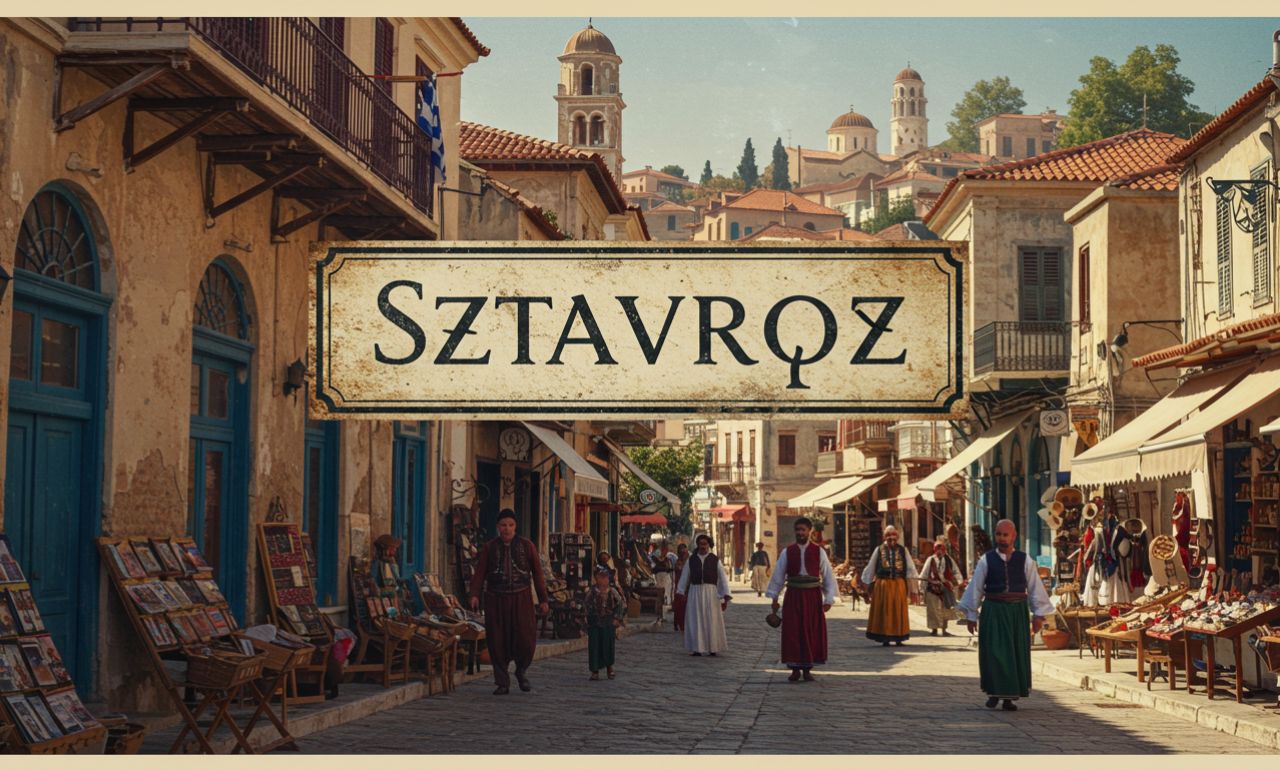In an increasingly interconnected world, obscure words and traditions often rise to prominence. One such intriguing term is sztavrosz, a word that has started making its way into cultural discussions, academic circles, and even online communities. While its origins remain somewhat enigmatic, has begun to symbolize a deeper layer of identity, heritage, and transformation in various contexts.
What is Sztavrosz?
At its core, sztavrosz refers to a symbolic or cultural artifact believed to have historical relevance in specific Eastern European and Mediterranean regions. Though the exact definition varies depending on regional dialects and historical interpretations, many scholars associate with ceremonial practices, community symbolism, or ancient rituals.
More than just a term, sztavrosz encapsulates a worldview—a lens through which people perceive heritage, lineage, and shared memory. Its recent resurgence in global interest shows how ancient concepts can find new life in contemporary discussions.
Origins and Etymology of Sztavrosz
The etymology of sztavrosz is layered and complex. Linguists trace its roots to ancient Greek or Slavic derivatives, possibly linked to religious or tribal connotations. Some experts believe it to be a variant of “stavros,” meaning “cross” in Greek, suggesting a connection to Christian symbolism or even pagan pre-Christian rituals.
Despite its uncertain linguistic path, the word has maintained a sense of sacredness and mystique, preserved in oral storytelling, folk traditions, and historical manuscripts.
Sztavrosz in Folklore and Tradition
In many cultures, sztavrosz is more than a word—it is a symbol. Folk tales from rural areas in countries like Bulgaria, Greece, or Hungary describe as an emblem carried by wise elders or spiritual leaders during seasonal festivals or rites of passage. It is sometimes represented as a crafted item—wooden, metallic, or even stone—bearing symbols unique to that community.
These rituals often include music, dance, and the retelling of ancestral legends, with sztavrosz serving as a central element to link generations. The object (or concept) embodies protection, unity, and a call for guidance from the spiritual realm.
Modern-Day Significance of Sztavrosz
In recent years, sztavrosz has seen a renaissance in academic and pop culture discourse. Its symbolic power is being studied in anthropology, theology, and even literature. Artists have used as inspiration for modern installations, while authors have integrated the word into novels exploring identity and migration.
Moreover, online platforms like Reddit, Wikipedia, and even TikTok have begun exploring and debating the origins and meanings of sztavrosz. This digital attention has not only sparked new interest but also preserved the oral and cultural history associated with the term.
Why is Sztavrosz Gaining Global Attention?
The world today craves authenticity and deep-rooted meaning. As societies become more fast-paced and digitized, many seek to reconnect with older traditions and forgotten wisdom. offers exactly that—a gateway to ancestral knowledge and a sense of belonging.
In the age of globalization, people are exploring their cultural identities more than ever before. Movements advocating for indigenous rights, heritage conservation, and spiritual reawakening have found sztavrosz to be a powerful and flexible symbol.
Academic Interest in Sztavrosz
Anthropologists and historians have begun documenting how sztavrosz has evolved across cultures. Research papers now explore its role in mythologies, religious rites, and community storytelling. Scholars argue that serves as a microcosm of larger cultural shifts—from oral to written traditions, from tribal to national identities.
Universities in Europe have even begun offering seminars discussing the role of symbols like sztavrosz in post-modern studies and comparative literature. These explorations demonstrate that this term is no longer just a cultural relic but a concept with modern analytical relevance.
Sztavrosz and Artistic Expression
Artists, particularly those involved in mixed media and performance art, are now incorporating sztavrosz into their work. For instance, installations have featured reconstructed versions of based on archaeological sketches or folklore interpretations. These exhibitions aim to bridge the ancient with the modern, inviting viewers to explore their own spiritual and historical narratives.
Poets and musicians also reference sztavrosz in their compositions, using it as a metaphor for rebirth, struggle, or continuity. Its sonic and visual appeal makes it an attractive concept for artistic exploration.
Misconceptions About Sztavrosz
As the term grows in popularity, misconceptions have also emerged. Some wrongly assume that sztavrosz is tied to a specific religion or region alone. However, it is more appropriate to view it as a multifaceted symbol—one that transcends boundaries and evolves depending on context.
Another common misunderstanding is that is simply a decorative item or a superstitious relic. In truth, it often holds layers of meaning tied to ethics, identity, and historical consciousness.
The Future of Sztavrosz
With increasing academic and cultural focus, the future of sztavrosz seems promising. Its versatility as a concept ensures that it will continue to be relevant—whether as a topic in intellectual circles or as a symbol of unity in global art and culture.
Digital archiving projects and cultural preservation organizations are already documenting regional variants of , ensuring that this powerful term is not lost to time. There is also talk of establishing international symposiums dedicated entirely to the exploration of sztavrosz and similar symbols of heritage.
Conclusion
In an era of rapid transformation, sztavrosz serves as a meaningful anchor to the past. It reminds us of the richness embedded in language, tradition, and shared memory. Whether encountered in a museum, a research paper, or a village ceremony, invites curiosity, respect, and a deeper understanding of our cultural roots.
As more people around the world discover this powerful concept, one thing becomes clear: is not just a word—it is a legacy.
